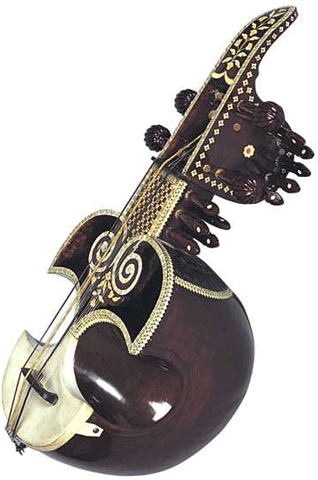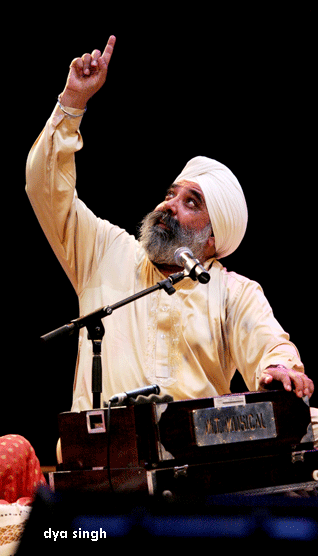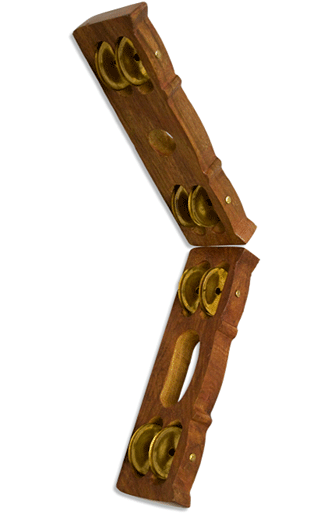
Above: the Toombi. Below, first from bottom - the Khartal. Second from bottom - the Chimta. Third from bottom - the Bugchu.Thumbnail - the Dhol.



Music
Making Sweet Music - on Lohri!
by DIPANITA NATH
When this group of girls gets together, there's not a moment's silence, especially when they bring out their formidable number of musical instruments, 32 at last count.
They are the Sanjha Dillan Dian, a 12-member all-women orchestra from HMV Jalandhar, a college in Punjab.
They swear by folk music, the older the better, but their main strength lies in playing a range of traditionally Punjabi instruments, among them forgotten ones like the been and the damru.
"Both are generally played by the neighbourhood sapera (snake charmer), but in another age and time, they were an integral part of Punjab's folk music ensemble," says Kulwinderdeep Kaur, head of the music department of the college.
The group's kit also contains the toombi, an ektara-like string instrument that was a favourite of Mirabai, the tumki, a small leather-bound brass vessel played with sticks, the vanjali, a type of flute, twin flutes or the algoza, sangi, a smaller form of sarangi, and conch shells.
"The orchestra was set up six years ago to keep the music from traditional instruments alive. It is a matter of regret that several indigenous Punjabi instruments are now no more than pictures and descriptions in music books," says Kulwinderdeep.
While the nagara and the dhapli are still common at folk music performances, the art of playing the bugchu, the algoza and the daria - a type of drum, is restricted to music experts only.
"One of the reasons could be that it is very difficult to master the daria," says Anupama Soan, a 23-year-old student of the Mass Communications department, who has been a part of the orchestra for close to four years. "Despite my academic pressures, I put in four to five hours of practice a day several times a week," she says.
Like her, Simran Kaur, 23, who is studying for her M.A. in Music, juggles several instruments at a time; a sarangi makes way for the toombi, which is replaced by the khanjari and the dhapli.
Kiran Pabbi, a B.A. (2nd year) student, handles an array of kitchen utensils like the chimta, brass glasses and garvi.
Kulwinderdeep adds that the orchestra performs only at cultural events of academic significance and has rarely ventured beyond Punjab.
"No shaadi and sangeet functions for us," she says, as the group packs its bags to perform in at the India Habitat Centre on January 13, 2009 on Lohri.
[The band can be contacted at 2468.2001]
[Courtesy: Express India]
January 12, 2009
Conversation about this article
1: Gurmeet Kaur (Atlanta, Georgia, U.S.A.), January 13, 2009, 2:35 PM.
Happy to hear about this all-girls band, preserving and bringing back to life the sweet Punjabi folk music. I hope they inspire many more groups, get some great concerts going and, most of all, give a valuable and constructive outlet for young ones going astray in Punjab.


